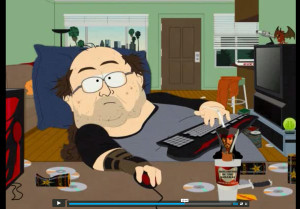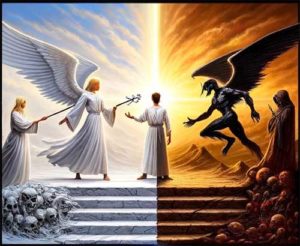 I’ve talked about this on my streams. But it’s probably worth mentioning here as well, as it’s not too obvious.
I’ve talked about this on my streams. But it’s probably worth mentioning here as well, as it’s not too obvious.
In the first two parts of Diablo, the storyline and lore were quite straightforward and clear: Diablo (Mephisto/Baal) – bad; angels – good. Kill the bad, help the good.
Starting with Diablo 3, the focus shifted. There was a transition from a black-and-white moral dichotomy to a more complex and multifaceted worldview. 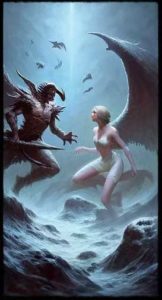 (Almost all) angels in the world of Sanctuary turned out to be not “fathers”, but deceivers. And humans (nephalems) – an independent and no less worthy representative of fauna, emerged from the interbreeding of angels and demons. In this context, the threat from angels to human existence (potentially) is much greater than from demons; as demons largely revel in human imperfections, while most angels find humans irritating.
(Almost all) angels in the world of Sanctuary turned out to be not “fathers”, but deceivers. And humans (nephalems) – an independent and no less worthy representative of fauna, emerged from the interbreeding of angels and demons. In this context, the threat from angels to human existence (potentially) is much greater than from demons; as demons largely revel in human imperfections, while most angels find humans irritating.
The main idea of the world of Sanctuary is:
Humans are Captives in the Hands of the World’s Mighty.
We are like tiny insects, manipulated one way or another by angels (the so-called ‘good’) and demons (kinda ‘bad’) for their own interests.
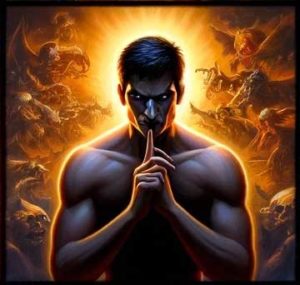 This is, of course, the cover. Inside is the idea is in striving for a deeper understanding of human nature. Traditional moral absolutism (good and evil seen as immutable and universal categories) gives way to postmodern pluralism and relativism (the rejection of universal truths and the recognition of multiple realities). Instead of a clear understanding of the world, players face a multitude of perspectives and interpretations of events, which makes them question the absolute nature of good and evil. In a way, the evolution of the Diablo series’ storyline is a conflict between Idealism and Realism. Idealism, represented in the earlier parts, gives way to a more realistic and pragmatic view of the world, where moral dilemmas do not always have clear and definitive solutions.
This is, of course, the cover. Inside is the idea is in striving for a deeper understanding of human nature. Traditional moral absolutism (good and evil seen as immutable and universal categories) gives way to postmodern pluralism and relativism (the rejection of universal truths and the recognition of multiple realities). Instead of a clear understanding of the world, players face a multitude of perspectives and interpretations of events, which makes them question the absolute nature of good and evil. In a way, the evolution of the Diablo series’ storyline is a conflict between Idealism and Realism. Idealism, represented in the earlier parts, gives way to a more realistic and pragmatic view of the world, where moral dilemmas do not always have clear and definitive solutions.
 The idea is correct, beautiful, philosophical, deep. It resonates with the real world. The plot of D4 finally brought this idea to a climax. If in D3 we simply methodically beat up the winged and horned – in D4 we primarily feel the impact of the Eternal Conflict on the lives of ordinary people; each individual representing a universe in themselves; and these universes collapse one after another, burning like moths on a lamp. The townee side-quests, which are abundant in D4, very organically complement the epic storyline.
The idea is correct, beautiful, philosophical, deep. It resonates with the real world. The plot of D4 finally brought this idea to a climax. If in D3 we simply methodically beat up the winged and horned – in D4 we primarily feel the impact of the Eternal Conflict on the lives of ordinary people; each individual representing a universe in themselves; and these universes collapse one after another, burning like moths on a lamp. The townee side-quests, which are abundant in D4, very organically complement the epic storyline.
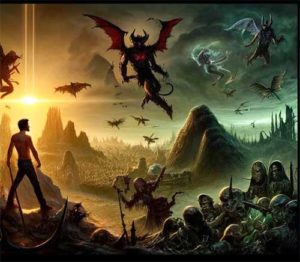 One thing’s for certain, the scriptwriters at Blizzard are competent – were, are (and probably will be). I would say this – the only aspect in which new Blizzard games (or expansions) get better every year is the lore, world setting development, and plotline evolution. Gameplay occasionally degrades – so D2 is better than D3-4; and vanilla WoW is better than all the expansions combined… but in terms of the storyline, Diablo has grown into something more than just banal chopping up baddies; so too has the WoW setting developed quite multifacetedly and organically. Many WoW players pay for subscriptions and buy expansions exclusively for the continuation of the storyline.
One thing’s for certain, the scriptwriters at Blizzard are competent – were, are (and probably will be). I would say this – the only aspect in which new Blizzard games (or expansions) get better every year is the lore, world setting development, and plotline evolution. Gameplay occasionally degrades – so D2 is better than D3-4; and vanilla WoW is better than all the expansions combined… but in terms of the storyline, Diablo has grown into something more than just banal chopping up baddies; so too has the WoW setting developed quite multifacetedly and organically. Many WoW players pay for subscriptions and buy expansions exclusively for the continuation of the storyline.
But what’s missing? Existentialism – that is, freedom of choice and personal responsibility. In Diablo, as in WoW, players are rarely given the opportunity for non-linear quest progression. Usually, all dialogues do not imply branching, and here lacks the spirit of Fallout series – where characters face moral dilemmas that require players to make choices based not on imposed moral norms, but on personal responsibility and understanding of the world… Perhaps we will see this aspect in Diablo 5.
